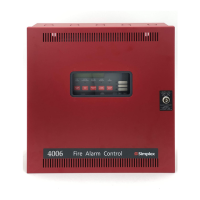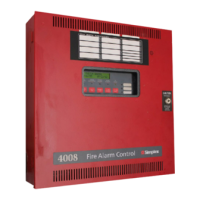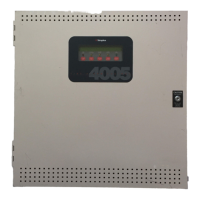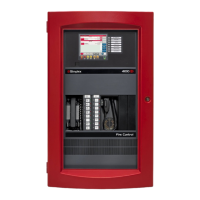22
When a supervisory condition is detected by the FACP, the panel does the following to indicate
the presence of the condition.
The yellow Supervisory LED flashes.
Tone-alert (piezo buzzer) sounds steady.
The alphanumeric display on the interface panel indicates supervisory condition, as shown
below.
Figure 4–1. Interface Panel Showing Supervisory Condition
The first step in managing a supervisory condition is to acknowledge the condition.
Acknowledging a supervisory does two important things:
It records the time and date at which you observed the presence of the condition and stores
that information in the system’s historical log.
When you press the acknowledge key, the system displays specific data on the location of the
supervisory condition.
It is important to understand that the FACP can be configured with either Global or Individual
Acknowledge. These options function as follows:
Global Acknowledge. When global acknowledge is enabled, one press of the SUPV ACK
key acknowledges every point currently reporting a supervisory condition.
Individual Acknowledge. If individual acknowledge is enabled, the SUPV ACK key must
be pressed to individually acknowledge each supervisory condition. Individual acknowledge
must be selected if the panel is providing proprietary receiving service in accordance with
NFPA72.
The SUPV ACK key, which is used to acknowledge supervisory conditions (either globally or
individually), is located just beneath the “SUPERVISORY” LED. Refer to Figure 4-1. If the
SUPV ACK key is passcode protected (by default, it is not), you cannot use this key to
acknowledge supervisory conditions unless you have the required passcode.
74BHow the FACP
Indicates the
Presence of a
Supervisory
Condition
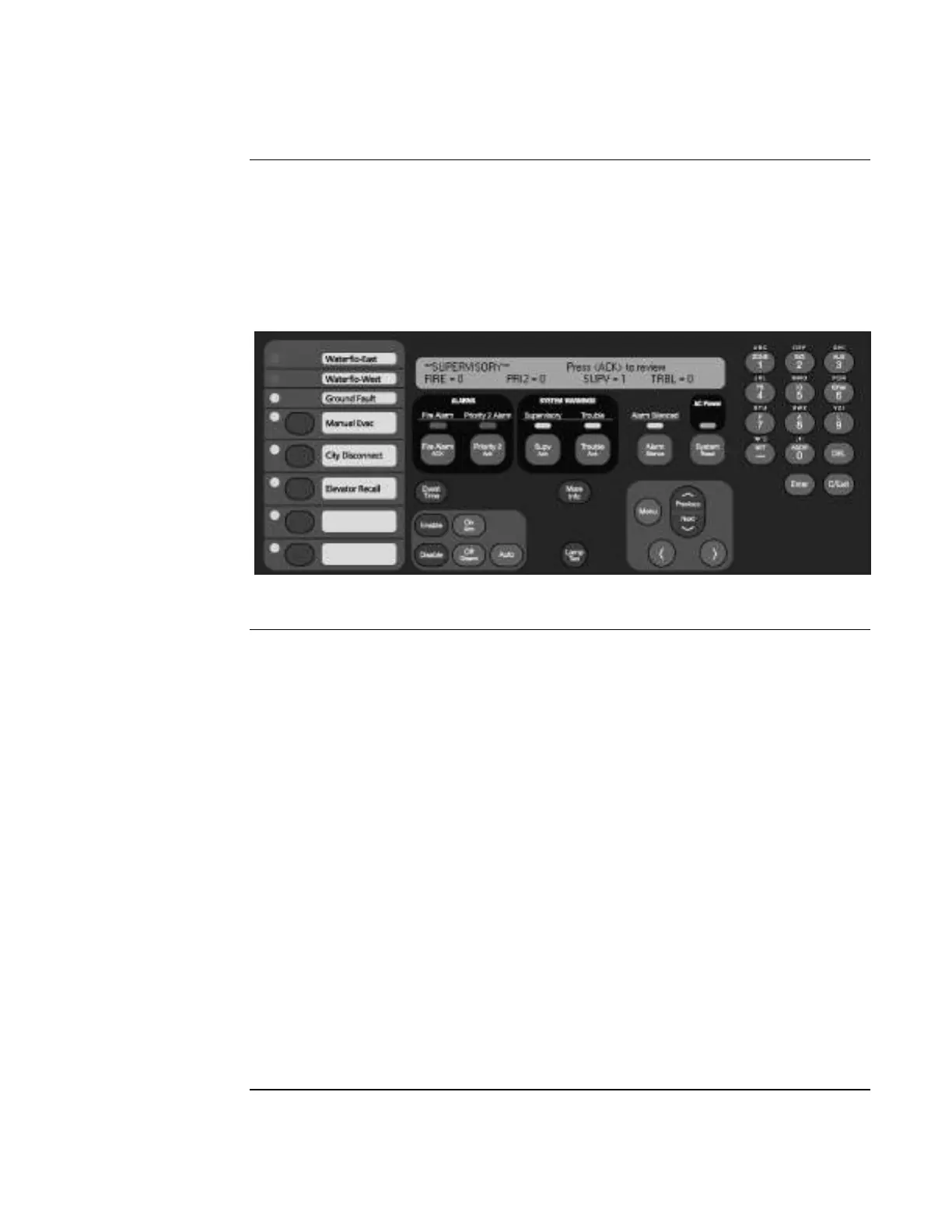